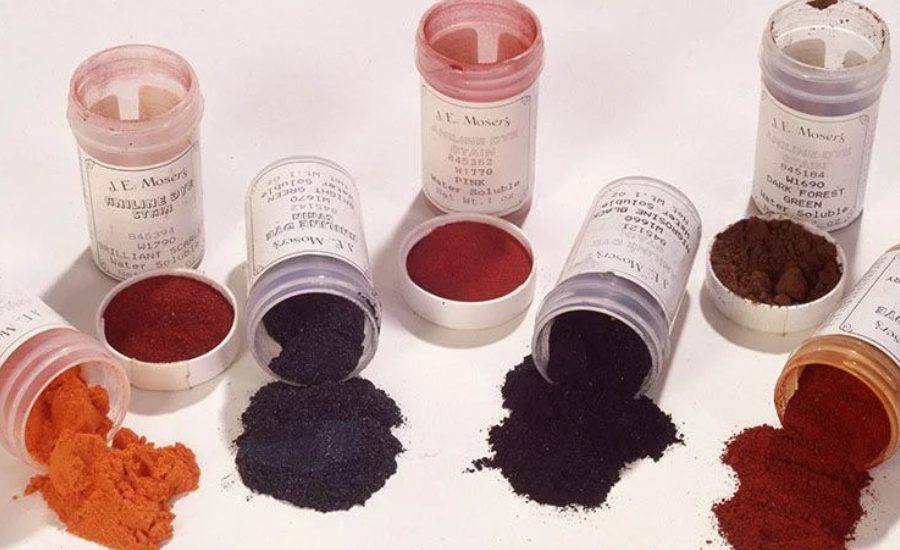Dsp De Q Tino Con Anilina Seco O Lavo, Process, Disadvantages & More
Introduction
DSP De Q Tino Con Anilina, also known as dyeing with aniline, is a well-regarded method for adding vibrant colors to fabrics. This dyeing technique has three primary approaches: dry dyeing (Seco), wash dyeing (Lavo), and another lesser-known variant. Each technique varies in terms of the fabric’s final color intensity and finish, catering to different design and texture preferences.
Dry dyeing (Seco) typically results in rich, deep tones, providing a bold and lasting color. Wash dyeing (Lavo), on the other hand, offers a softer, more nuanced look that can be ideal for subtler finishes. Each method has specific advantages depending on the desired outcome and fabric type. For those exploring fabric dyeing, it’s essential to consider factors like color fastness, fabric texture, and intended use to determine which process best meets your requirements. In this article we;ll read about Dsp De Q Tino Con Anilina Seco O Lavo.
What is Aniline Dye?
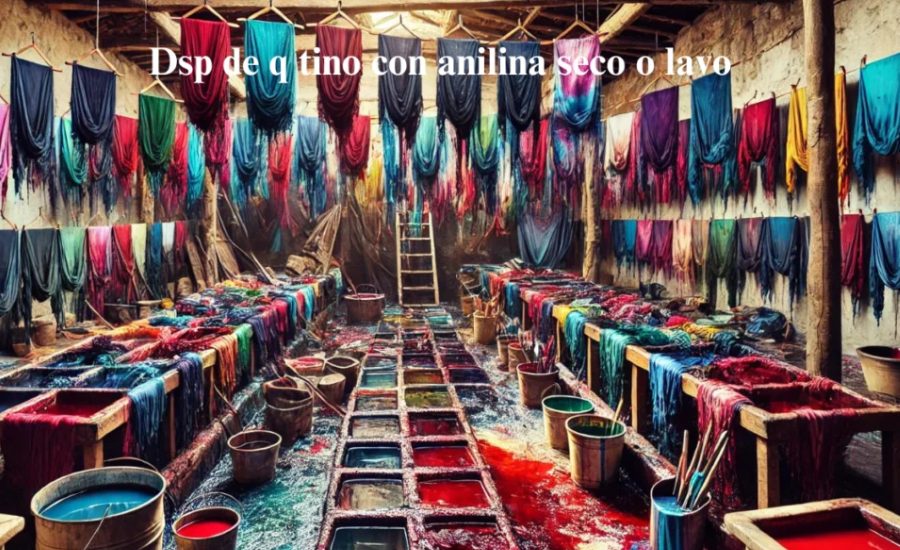
Aniline dye, a artificial dye sourced from the natural compound aniline, is renowned for its vibrant colorings and adaptableness throughout multiple material types. This dye is often used to enhance textiles like cotton, wool, and silk, lending them a putting, lengthy-lasting hue. Available in each powder and liquid paperwork, aniline dye gives flexibility for loads of applications, making it a favourite within the textile enterprise as well as amongst DIY fans seeking to personalize or revitalize their apparel and crafts.
Its reputation stems from its capability to acquire wealthy shade saturation, making it best for each industrial material production and man or woman projects. Whether used by industry specialists or hobbyists, aniline dye provides a sincere and powerful manner to create beautiful, particular portions. When making use of this dye, users should carefully observe safety suggestions because of the artificial chemical substances involved, making sure the exceptional outcomes whilst retaining a secure surroundings.
The Process of Dyeing Fabrics with Aniline
Dyeing fabrics with aniline entails several key steps to make certain colourful, long-lasting colors. Understanding these steps and the publish-dyeing process is essential for accomplishing the nice results, whether you want to dry or wash the material in a while.
Step 1: Preparation
Before dyeing, it’s important to thoroughly smooth the material. This involves washing it with a mild detergent to do away with any residues, oils, or impurities that would save you the dye from fully soaking up into the fibers. Pre-cleaning devices a easy foundation, enhancing the dye’s effectiveness.
Step 2: Mixing the Dye
Next, the aniline dye is ready. This includes dissolving the dye powder or liquid in heat water, following the producer’s instructions for attention. Depending on the sort of cloth, additives like salt or vinegar may be added to the mixture to promote better color fixation, helping the dye adhere extra effectively to the fabric fibers.
Step three: Dyeing
Once the dye is prepared, immerse the material within the dye solution. It’s critical to absolutely saturate the fabric, making sure that the shade spreads evenly. The time required for this step depends on the desired coloration intensity—longer immersion commonly effects in deeper, greater extreme sun shades.
Step four: Rinsing
After dyeing, rinse the cloth in cold water till the rinse water runs clean. This step removes any excess dye, decreasing the risk of shade bleeding in destiny washes. Proper rinsing is vital to prevent dye switch to other fabrics or apparel at some stage in subsequent use.
DSP De Q Tino Con Anilina: Drying vs. Washing After Dyeing
Aniline dyeing offers two main options for post-dyeing treatment: drying and washing. Each method has its benefits and drawbacks, depending on the fabric type and the desired finish.
Drying Process: Advantages and Disadvantages
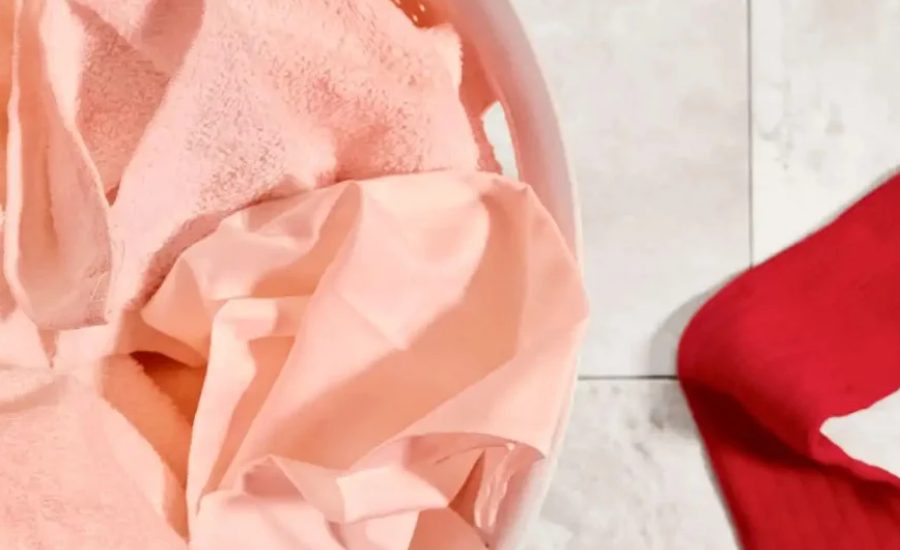
Advantages of Air Drying:
Enhanced Color Fixation: Air drying permits the dye to bond securely with the material fibers, frequently ensuing in a extra colourful, durable colour. This technique reduces the danger of color fading through the years, especially for items uncovered to mild or everyday use.
Minimized Risk of Bleeding: Allowing the material to dry clearly after dyeing facilitates to lessen the likelihood of coloration bleeding. By warding off instantaneous washing, the dye has time to set firmly into the material.
Disadvantages of Air Drying:
Possible Stiffness: Air drying may additionally leave positive fabrics with a rugged or stiff texture. Thicker substances like denim or linen might also feel inflexible and less flexible after air drying.
Excess Dye Residue: In some instances, air drying with out thorough rinsing would possibly go away excess dye on the fabric floor. This residue may want to switch to other items upon contact, creating ability staining problems.
Washing Process: Advantages and Disadvantages
Advantages of Washing Immediately After Dyeing:
Removal of Excess Dye: Washing helps cast off unabsorbed dye that would otherwise rub off on different fabric. This procedure is particularly beneficial for stopping unintended staining throughout future washes.
Uniform Color Distribution: Immediate washing can lead to a more even color spread across the fabric, enhancing the appearance and quality of the dyed item.
Disadvantages of Washing:
Risk of Fading: Washing too soon after dyeing might cause some color loss, especially if hot water or strong detergents are used. For more vibrant hues, washing requires careful handling.
Increased Care Requirements: Washing dyed fabrics requires attention to avoid uneven fading or color spots. Careful handling is crucial, particularly with delicate materials.
Key Considerations for Choosing Drying or Washing
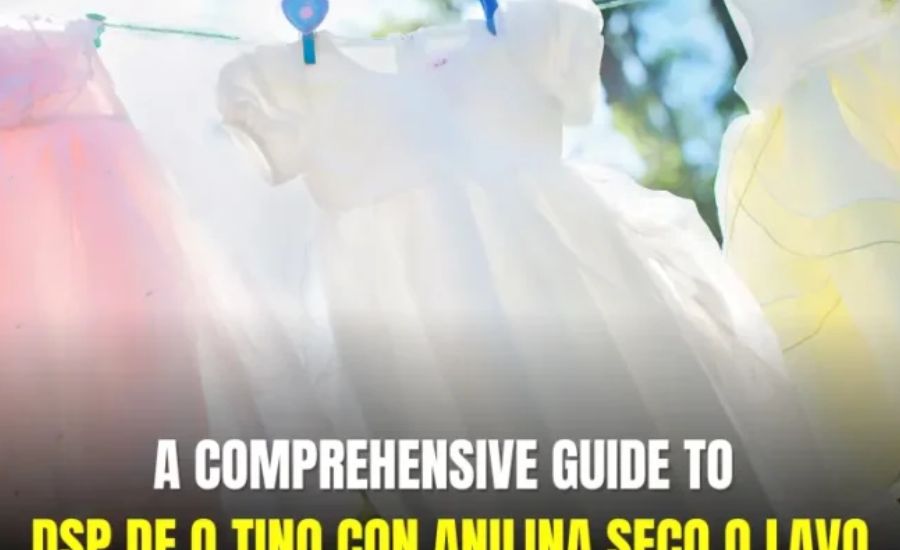
When deciding between drying and washing, consider several important factors:
Type of Fabric
Fabric type plays a major role in determining the most suitable post-dyeing treatment. Natural fibers like cotton and wool generally respond well to air drying, which allows the dye to deeply penetrate the material. However, delicate fabrics like silk may benefit from washing, which helps maintain softness.
Desired Color Intensity
For deep, vibrant shades, air drying is typically preferable as it helps lock in color. If you’re aiming for a softer, pastel effect, washing immediately after dyeing may soften the color intensity.
Intended Fabric Use
The fabric’s end-use can also influence the drying versus washing decision. For fabrics intended for clothing or other items requiring softness and flexibility, washing might be the better choice. For decorative pieces or textiles where texture is less critical, air drying may suffice.
Best Practices for Dyeing with Aniline
Regardless of the post-dyeing treatment you choose, following these best practices can improve the outcome of your dyeing project:
Testing
Always conduct a small test on a fabric swatch before dyeing the full piece. This sample helps you gauge how the fabric will respond to the dye and can guide your decision on whether to dry or wash the fabric afterward.
Following Manufacturer Instructions
Carefully follow the dye manufacturer’s instructions, specially regarding the encouraged dye-to-water ratio and dyeing time. This ensures the dye adheres properly and produces the fine outcomes.
Using Dye Fixatives
For additional shade retention, don’t forget the use of a dye fixative. Fixatives assist the dye molecules adhere to the material fibers greater securely, which can prevent fading and preserve coloration vibrancy through the years. This is in particular beneficial for gadgets in an effort to go through frequent washing.
Monitoring Water Temperature
If you choose to clean the material after dyeing, use bloodless water to lessen the danger of dye bleeding or fading. Hot water can weaken the dye bond, that can result in a duller colour.
Which is Better After Dyeing? Drying or Washing
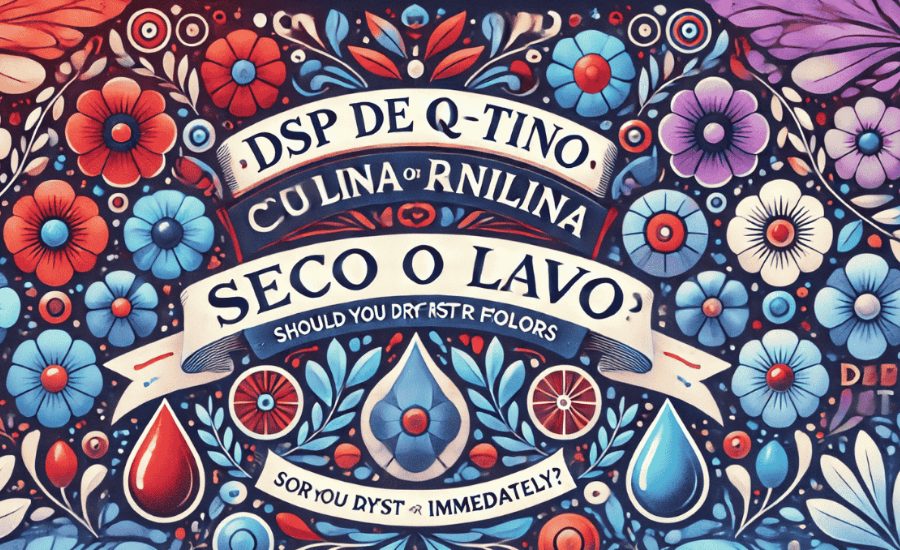
To make certain colourful, lengthy-lasting colours after dyeing, properly drying the fabric is essential. Air drying is typically recommended as it lets in the color to set clearly, reducing the danger of fading or bleeding. By warding off agitation, air drying helps the dye bond with the fabric fibers, resulting in a extra intense and durable color.
In positive cases, however, washing the cloth right after dyeing may be important—especially when there may be excess dye at the fabric. Washing allows rinse away any unbonded dye, minimizing the danger of switch to different fabric. It’s critical to wait until the shade has set sufficient to save you tremendous fading, as washing too soon can lead to a loss in vibrancy. By cautiously deciding on among drying and washing, you could beautify both the look and sturdiness of dyed fabric.
Tips for Achieving the Best Color Results
To achieve the best results in fabric dyeing, start by testing a small sample. This trial step helps confirm that the dye produces the color you want on the fabric without unexpected variations.
Next, make sure to keep the fabric moving in the dye bath. Stirring it regularly prevents blotches and uneven color patches, ensuring a smooth, consistent finish across the material.
Patience is also key during the dyeing process. Allow the fabric sufficient time in the dye bath to absorb the color fully. Avoiding a rush will yield richer, more even tones, making the final product look vibrant and professional. Following these steps can greatly enhance the overall quality of your dyeing results.
FACT:
DSP De Q Tino Con Anilina involves three dyeing methods: dry dyeing (Seco), wash dyeing (Lavo), and another lesser-known technique, each producing different color intensities and finishes.
Aniline dye is a synthetic dye derived from aniline, known for creating vibrant, long-lasting colors on various fabrics like cotton, wool, and silk.
Preparation for dyeing includes washing the fabric to remove residues, which helps the dye absorb evenly.
Mixing aniline dye typically involves dissolving dye in warm water and possibly adding salt or vinegar to improve color fixation.
Dyeing process: Fabric is immersed in the dye solution for even color saturation. Longer immersion deepens the color.
Post-dyeing treatment: Options include drying and washing, with each affecting the final appearance:
- Air drying enhances color fixation and reduces bleeding but may cause stiffness.
- Washing helps remove excess dye and can even out color but may cause some fading.
Factors influencing post-treatment include fabric type, desired color intensity, and intended use.
Best practices: Test on a swatch first, follow dye instructions, use fixatives for color retention, and rinse in cold water if washing to prevent fading.
Air drying generally ensures vibrant, long-lasting colors, but washing can be necessary if there’s excess dye.
FAQs on DSP De Q Tino Con Anilina Dyeing Process
1. What is DSP De Q Tino Con Anilina?
DSP De Q Tino Con Anilina refers to dyeing fabric with aniline, a synthetic dye. It involves different methods such as dry dyeing (Seco) and wash dyeing (Lavo), each achieving different finishes and color intensities.
2. What is aniline dye?
Aniline dye is a synthetic dye derived from the compound aniline, known for its vibrant, long-lasting colors. It’s widely used on fabrics like cotton, wool, and silk.
3. What’s the difference between dry dyeing (Seco) and wash dyeing (Lavo)?
- Dry Dyeing (Seco): This method tends to produce bold, intense colors and allows the dye to bond more firmly with the fabric, reducing fading and bleeding.
- Wash Dyeing (Lavo): This technique results in softer, less intense colors and can enhance fabric flexibility by washing out excess dye.
4. How do I prepare fabric for aniline dyeing?
Wash the fabric with a mild detergent to remove any residues or oils, allowing the dye to absorb more evenly and fully into the fabric.
5. How should I mix aniline dye?
Dissolve the dye in warm water according to the manufacturer’s instructions. Depending on the fabric, adding salt or vinegar can help improve color fixation.
6. How long should I immerse fabric in the dye?
The immersion time depends on the desired color intensity. Longer immersion typically results in deeper, more vibrant colors.
7. Should I dry or wash the fabric after dyeing?
- Drying is usually recommended for vibrant, long-lasting colors as it allows the dye to set without bleeding.
- Washing may be necessary if there’s excess dye on the fabric, as it removes unabsorbed dye and evens out color, though it may cause slight fading.
8. What factors should I consider when deciding between drying or washing?
Consider the fabric type, desired color intensity, and the final use of the fabric. Air drying works best for deep colors and durability, while washing can be better for delicate fabrics and softer finishes.
9. Are there any safety precautions for working with aniline dye?
Yes, as aniline dye contains synthetic chemicals, always work in a well-ventilated area, wear gloves, and follow all safety instructions on the dye packaging.
10. How can I make the color last longer?
Using a dye fixative can help the dye adhere more securely to the fabric fibers, preserving color vibrancy over time. Additionally, rinse the fabric in cold water if washing, as hot water can weaken the dye bond.
11. How do I avoid blotches or uneven color patches?
Keep the fabric moving in the dye bath by stirring it regularly. This helps achieve even color distribution across the material.
12. What should I do if I’m unsure about the color result?
Always test the dye on a small fabric swatch before dyeing the entire piece. This can help gauge how the dye will interact with the fabric.
13. What’s the best way to rinse dyed fabric?
After dyeing, rinse the fabric in cold water until the water runs clear. This helps remove any excess dye and prevents color bleeding during future washes.
Summary of DSP De Q Tino Con Anilina (Dyeing with Aniline)
DSP De Q Tino Con Anilina refers to fabric dyeing with aniline dye, available in three methods: dry dyeing (Seco), wash dyeing (Lavo), and a lesser-known technique. Each method produces unique finishes and color intensities:
- Aniline Dye: A synthetic dye derived from aniline, known for producing vibrant and durable colors on various fabrics (cotton, wool, silk). It’s popular among professionals and DIY enthusiasts.
- Dyeing Process:
- Preparation: Wash fabric to remove residues.
- Mixing: Dissolve dye in warm water; salt or vinegar may improve color adherence.
- Dyeing: Immerse fabric evenly for desired color depth.
- Rinsing: Rinse in cold water to remove excess dye.
- Post-Dyeing Options:
- Air Drying: Enhances color fixation, reduces bleeding but may leave fabric stiff.
- Washing: Removes unabsorbed dye, evens color but may cause slight fading.
Considerations: Choose drying or washing based on fabric type, desired color intensity, and end use. Best practices include testing on a swatch, following instructions, and using a fixative to prolong color durability.
Read More Information About blog visit Discover Paradox
